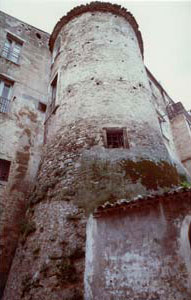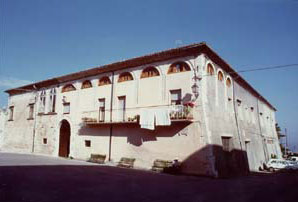The castle, a strong point of the defence
but also an element for the control of the economic activities and the management of the territory, in the Norman period was consolidated and often transformed
and enriched with new elements, which gave it a closed character opposed to the empty one of the castle-enceinte. The Norman presence had a crucial influence on
the history of the region even during later periods. Several Molisian castles are assumed to date back to Swabian and Aragonese times, though in many cases they
are actually Norman buildings which were subsequently restructured and can no longer be recognised as Norman.
The Angevin domination had repercussions on the political and administrative structures, with negative effects on Molise which hosted a large number of minor
feudal lords who exercised a harsh fiscal policy. The pre-eminence of the residential function manifested itself in the development of the residential castle,
whose principal element is the circular keep with a truncated cone base (Riccia, Colletorto, Torella, Venafro). Castle architecture in the Aragonese period
brought new transformations, adding more emphasis to the palatial role of the castle and featuring square or circular corner towers (Cerro al Volturno,
Ferrazzano, Macchiagodena, S.Elena Sannita). Existing buildings were adapted to the generalised use of firearms, the towers were trimmed and reinforced, the
crenellated parapets were replaced by lower merlons with rounded edges, and the curtain walls were reinforced with escarpments and earth bastions. The new
seigniorial palaces were no longer intended for defensive purposes. Moreover, newly-built palaces were erected in the centre of towns, though they often
preserved the typical characteristics of feudal residences (S.Martino in Pensilis, Portocannone, Frosolone, Ururi, Casacalenda), just like the social
organisation of the region continued to display the old feudal connotations for a long time.
 Il comune informa
Il comune informa 



